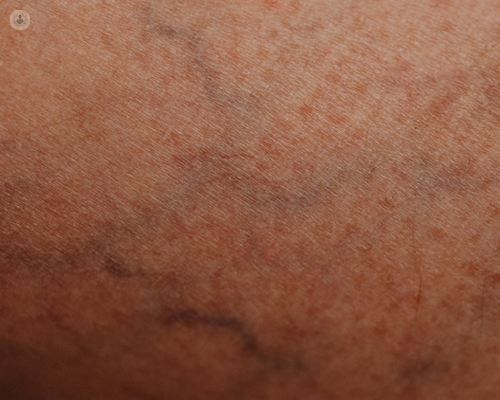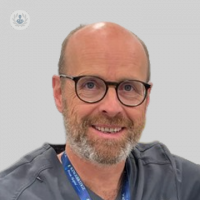Understanding the causes of spider veins
Written in association with:Spider veins, medically known as telangiectasia or thread veins, are a common vascular condition that affects a wide range of individuals. In this article leading venous surgeon Mr Alastair Lewis explores the causes of spider veins, offering insights to help you better understand this condition.

What are spider veins?
Spider veins are tiny, dilated blood vessels that appear close to the surface of the skin. They often resemble a web or a spider's legs, hence the name. These veins are most commonly found on the legs, although they can also occur on the face and other parts of the body. Although they are largely harmless in themselves, they are unsightly and often cause significant cosmetic concerns.
What causes spider veins?
The formation of spider veins is a normal part of the healing process, so anything that can cause stress in the skin can trigger the formation of new areas. Common triggers are minor injuries, exposure to heat or cold and surgical incisions on the legs. Prolonged standing and concurrent varicose veins tend to aggravate the development of spider veins. Genetic and hormonal factors are very important which explains why some patients are more prone to making new spider veins than others.
What can you do about spider veins?
If you’re concerned about the development of spider veins or already have them, it's essential to consult with a vascular specialist. The most effective treatment option is microsclerotherapy. Creams and lotions have no effect on spider veins. Treatments with cosmetic laser such as IPL are often either ineffective or vastly inferior to microsclerotherapy.
How does microsclerotherapy work?
A liquid is injected into the veins which strips off their non-stick lining. Injected veins take on a darker appearance for a few weeks. After that, most of the treated veins will fade away while a small proportion recover. It usually takes two or three treatment sessions to obtain a desirable result.
I’ve had treatment in the past but it didn’t work, what can I do?
It is important to attend a clinician who has a large experience of treating spider veins. The most common cause for failed treatment is underlying veins that have been missed at the last attempt. A detailed ultrasound assessment can identify small veins that helped keep the spider veins from responding to treatment.
If you’re concerned about spider or thread veins, arrange a consultation with Mr Lewis via his Top Doctors profile.


